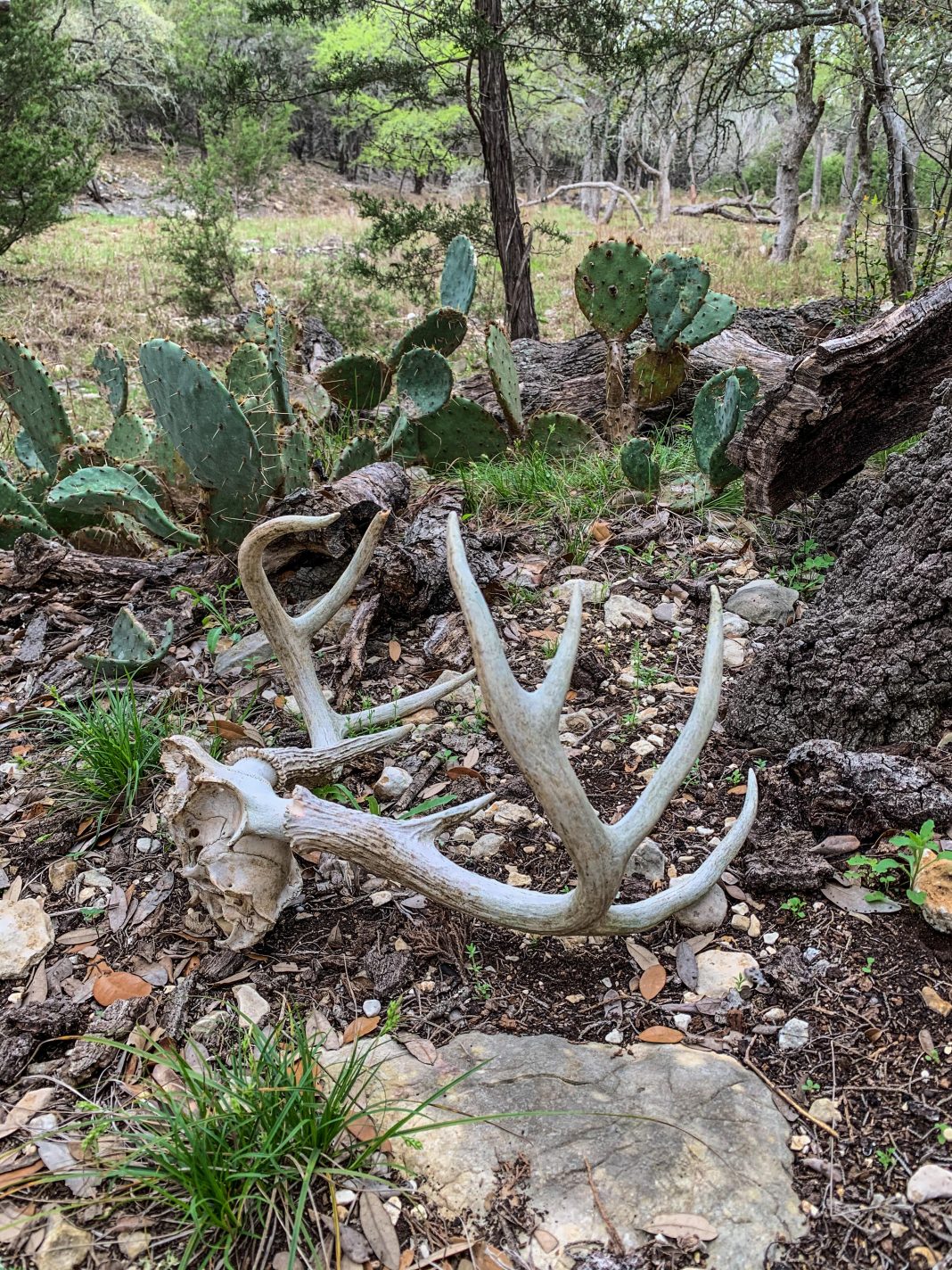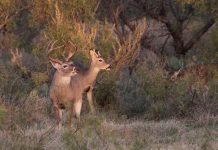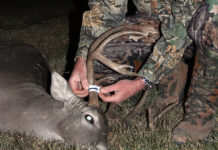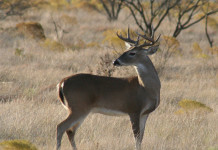Shed hunting has become the prime offseason pursuit for deer hunters across the country — especially in Texas — providing a hands-on hobby to allow for extra days in the field while also helping to serve as a scouting and management tool, even on the smallest of tracts.
If you’re not familiar with shed hunting, it’s worth a quick look to learn more about the science behind the pursuit as well as the many ways it’s beneficial. Each year male deer shed their headgear anywhere from late winter to early depending on a number of variables, including location and habitat, as well as factors influencing testosterone levels such as diet and age. Antler is the fastest-growing bone in nature, and once it’s shed, bucks will start on growing more for the next year in a cycle that continues.
It’s especially important for whitetails to have good forage sources and range conditions during the spring and summer to help bucks reach their full antler potential later during hunting seasons.
When it comes to shed hunting as a tool, there are plenty of good reasons to be on the hunt for fallen headgear. Shed hunting is a great way to decipher whitetail movement on your lands or leases, especially if you’re looking to find bedding areas and trails that have been used from the previous season. It also can be beneficial knowing that certain bucks made it through hunting season unscathed, allowing them to drop their antlers well after they were at risk of being harvested.
If you’re interested in antler scores, finding and measuring sheds can provide a better idea of what that particular whitetail scored that year and could potentially go above during the upcoming hunting frameworks. Unfortunately, you sometimes will come across the complete rack and skull of a buck that died (“dead head”), which also can provide insight into buck survival and mortality if you find multiple dead bucks.
In terms of finding a new place to hunt, searching for sheds can also help you scout a potential lease to see if it’s worth the investment of time and energy. If there is loads of dropped bone on the ground, that’s obviously a plus, but finding even one pair of heavy 10- or 12-point sheds is also just as fulfilling in knowing what kind of bucks could be in that area.
The optimum time to go shed hunting is late winter, which typically is the earliest that bucks will drop their antlers. However, it’s not unusual to find fresh sheds later in the spring while turkey hunting. Once the antlers are on the ground, they start to turn white while getting bleached by the sun and quickly become targets for rodents. Late winter also is a good time for shed hunting as most prime areas will be devoid of lots of vegetation, making it easier to spy the fallen antlers.
Shed hunting also is attractive for two obvious reasons: it’s free — unless you’re into paying for package trips that some outfitters now offer for the discerning antler hunter — and it’s essentially like being a kid again on a treasure hunt. I’ve been on a number of spring turkey hunts and found a wide variety of sheds while trekking through gobbler country, ranging from diminutive forked antlers that are essentially an afterthought to thick-based bone that would bring a smile to the face of any hunter. Searching for sheds also lends itself to finding other special items including arrowheads and other artifacts dropped by previous hunters.
Shed antler hunting also has become popular as a means to procure material for decoration — even for business purposes. I’ve got notable sheds I’ve found on display and I also know many Texans with multiple pieces of knives, art, furniture and lighting that include some arrangement of antlers, some of them being quite expensive and ornate!
Shed hunting also is a great way to introduce youngsters to the outdoors and provide exceptional memories. You definitely should plan ahead if you’re taking kids along and make sure you have enough supplies for a walk through the woods, but it could be another good experience they’ll talk about for years to come.
Much of Texas is private, and trespassing for any reason is a crime, but it’s not unusual to get the go-ahead from someone if you ask politely about scouring their land for sheds. You never know, you might just find your next hunting spot for the upcoming season in the process!
Antlers vs. horns: They’re not the same
Don’t call a deer’s headgear “horns.”
Antlers are grown by members of the deer family (deer, elk, moose, caribou) while horns are grown by other mammals. A horn has a bony center or core. From the base of it grows a covering of hardened, modified cells called keratin. Horns are rarely shed and usually continue to grow throughout an animal’s lifetime. Both males and females may have them, but the female’s usually are smaller and less impressive. Most hoofed animals – cattle, sheep, goats and their wild relatives – grow horns. Pronghorn antelope also grow horns, but theirs are slightly different. They, too, have a keratin sheath covering a bony core, but a new sheath grows each year, pushing off the old one shortly after the breeding season is over. The male’s horns are branched (pronged), while the female’s are smaller and seldom pronged.
Unlike horns, antlers are solid bone and are grown only by members of the deer family. Normally only the males grow them; however, female reindeer and caribou are exceptions. These females generally use their antlers to push others away from the best feeding spots, especially when food is scarce. Males primarily use their antlers for fighting each other during the breeding season.
Moose antlers, which measure as much as 7 feet from tip to tip and weigh more than 45 pounds, are the largest modern specimens, but the extinct Irish elk’s were even bigger. Antlers from this elk, found buried in the peat bogs of Ireland, measured 11 feet from one side to the other.
Source: Texas Parks & Wildlife Department





















